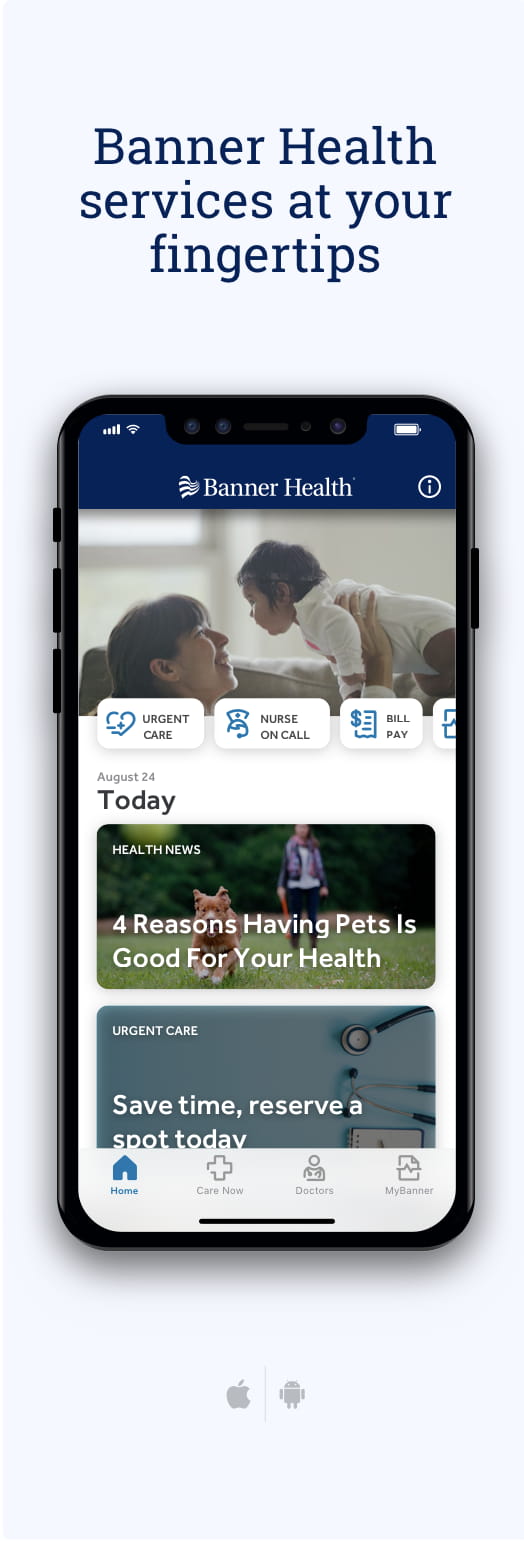Programa una mamografía de rutina, esperando que sea rápida y sin complicaciones. Pero entonces, el consultorio de su médico le llama para informarle que necesita una mamografía de diagnóstico.
Espera, ¿qué es eso? ¿Una mamografía no es solo una mamografía?
Si nunca ha oído hablar de la diferencia entre una mamografía de detección y una mamografía diagnóstica, no está sola. Muchas mujeres no se dan cuenta de la diferencia hasta que la descubren de repente. Aunque ambos tipos de mamografías son radiografías de baja dosis para examinar la mama, están diseñadas para diferentes etapas del proceso de diagnóstico.
Hablamos con la Doctor.Danielle Summers , especialista en imágenes mamarias y radióloga de diagnóstico del Banner MD Anderson Cancer Center. Ella explica las diferencias entre las mamografías y cuándo y por qué se realizan.
¿Qué es una mamografía de detección?
Una mamografía de detección es una radiografía que se utiliza para detectar cambios o signos que puedan indicar cáncer. Estos incluyen:
- Masas (áreas de tejido sólido)
- Asimetrías (partes de la mama que se ven diferentes en comparación con el resto)
- Calcificaciones (pequeñas manchas blancas que pueden aparecer como granos de arena)
- Distorsión arquitectónica (cuando el tejido parece estar siendo estirado hasta adoptar forma de estrella)
“Una mamografía de detección incluye cuatro imágenes, dos de cada seno”, explicó el Dr. Summers. “Las utilizamos para detectar cánceres de mama en etapas tempranas, cuando son más pequeños y se encuentran en etapas iniciales, cuando los tratamientos son más efectivos y pueden ser menos agresivos”.
¿Quién necesita una mamografía de detección?
La mayoría de las mujeres deben hacerse una mamografía de detección una vez al año a partir de los 40 años. Esto puede cambiar según sus antecedentes personales o familiares o su riesgo genético, por lo que siempre es bueno hablar con su proveedor de atención médica sobre el momento adecuado para usted.
Las mujeres con mayor riesgo de desarrollar la enfermedad deberían hacerse la prueba de detección de forma más temprana. Esto incluye a aquellas que:
- Tener una mutación del gen BRCA1 o BCRA2 identificada mediante pruebas genéticas
- Tiene un padre, hermano o hijo con una mutación del gen BRCA1 o BRCA2
- Recibió tratamientos de radiación en el pecho antes de los 30 años.
- Ha tenido (o tiene un familiar que tiene) ciertas afecciones médicas, como el síndrome de Li-Fraumeni y el síndrome de Cowden.
¿Cuánto tiempo dura una mamografía de detección?
Las mamografías de detección son rápidas (duran unos 20 minutos) y, por lo general, se da de alta inmediatamente después de tomar las imágenes. Un radiólogo las interpreta y, por lo general, recibirá los resultados en unas pocas semanas (a veces, incluso en un par de días).
¿Qué pasa si me vuelven a llamar?
Es común que le vuelvan a llamar después de su primera mamografía . De hecho, aproximadamente 1 de cada 10 mujeres necesita imágenes adicionales. Esto no significa que tenga cáncer. Simplemente significa que el radiólogo necesita más información. Podría tener tejido mamario denso , estructuras superpuestas o un quiste poco visible. En estos casos, una mamografía diagnóstica puede ayudar a determinarlo.
¿Qué es una mamografía diagnóstica?
Una mamografía diagnóstica es diferente de una mamografía de detección. Puede incluir ángulos adicionales o imágenes ampliadas del área en cuestión.
“Hay dos razones principales por las que utilizamos mamografías diagnósticas”, dijo la Dra. Summers. “Una es cuando una mujer acude con un síntoma y la otra es cuando observamos algo en una mamografía de detección que debemos examinar con más detalle”.
Es posible que necesite una mamografía diagnóstica si:
- Ha notado un bulto, dolor, engrosamiento de la piel, cambios en el pezón o secreción.
- Su proveedor ha encontrado algo durante un examen clínico de mama
- Una mamografía previa mostró una anomalía
- Tiene antecedentes de cáncer de mama (especialmente en los primeros años después del tratamiento)
- Una mamografía de detección encontró algo que necesita una evaluación más detallada.
Las mamografías diagnósticas no tienen un calendario fijo. Se solicitan según sea necesario, según los síntomas, los factores de riesgo o los planes de seguimiento. Si ha tenido un resultado probablemente benigno, es posible que le pidan que regrese en 6 meses para un seguimiento a corto plazo.
¿Cuánto tiempo dura una mamografía diagnóstica?
Las mamografías de diagnóstico pueden tardar más que las de detección. Dependiendo del número de imágenes necesarias, pueden tardar entre 30 y 60 minutos. A diferencia de las mamografías de detección, los radiólogos suelen evaluar las radiografías mientras usted aún se encuentra en el centro de pruebas por si necesitan solicitar imágenes adicionales.
Según los resultados, su proveedor puede recomendar pruebas adicionales, como una ecografía mamaria.
¿Qué es una ecografía mamaria?
Una ecografía mamaria utiliza ondas sonoras, no radiación, para crear imágenes de la mama. No sustituye a una mamografía, pero suele utilizarse como complemento.
“La ecografía es especialmente útil cuando queremos examinar con más detalle algo que encontramos en una mamografía”, dijo el Dr. Summers. “También es una excelente herramienta para evaluar bultos en mujeres jóvenes con tejido mamario más denso”.
La ecografía puede:
- Ayuda a diferenciar entre una masa sólida y un quiste lleno de líquido.
- Proporcionar detalles adicionales sobre las áreas que se ven inusuales en una mamografía
- Se utiliza para guiar una biopsia si es necesario tomar muestras de tejido.
Hable con su proveedor de atención médica si esto es algo que debe considerar.
¿El seguro cubre las mamografías?
La mayoría de los planes de seguro cubren mamografías de detección anuales a partir de los 40 años, sin necesidad de derivación.
Las mamografías diagnósticas suelen estar cubiertas por el seguro médico, pero podrían estar incluidas en el deducible o coaseguro de su plan. Dependiendo de su plan y del lugar donde reciba atención médica, podría necesitar una referencia de su proveedor.
Es mejor consultar con anticipación con su proveedor de seguros para que no haya sorpresas.
¿Cómo debe prepararse para su mamografía?
- Programe un momento en el que sus senos no estén sensibles. Esto suele ser una semana después de su período.
- Ponte un conjunto de dos piezas. Tendrás que quitarte la blusa para el examen.
- Evite el desodorante y la loción. Estos pueden aparecer en las imágenes y dificultar su lectura.
- Traiga sus registros de mamografías anteriores. Si se ha hecho una mamografía en otro lugar, traiga esas imágenes o solicite que se las envíen con anticipación.
Cuándo hablar con su doctor
Es importante que consultes con tu doctor si notas algún cambio en tus senos, como un bulto, dolor o cambios en la piel. Además, doctor si tienes antecedentes familiares de cáncer de mama o si no estás segura de cuándo comenzar las pruebas de detección.
Su doctor le ayudará a determinar qué tipo de prueba de imagen necesita y cuándo. También estará disponible para responder cualquier pregunta o inquietud que pueda tener.
Reflexiones finales
Independientemente de su edad o historial médico, cuidar su salud mamaria es una de las mejores maneras de protegerse. Las mamografías de detección regulares son rutinarias y preventivas, mientras que las mamografías de diagnóstico son más específicas y detalladas.
Si tiene más de 40 años o tiene preguntas sobre la salud de sus senos, hable con su profesional de la salud o con un especialista de Banner Health . Realizarse mamografías regularmente puede brindarle tranquilidad e incluso podría salvarle la vida.


